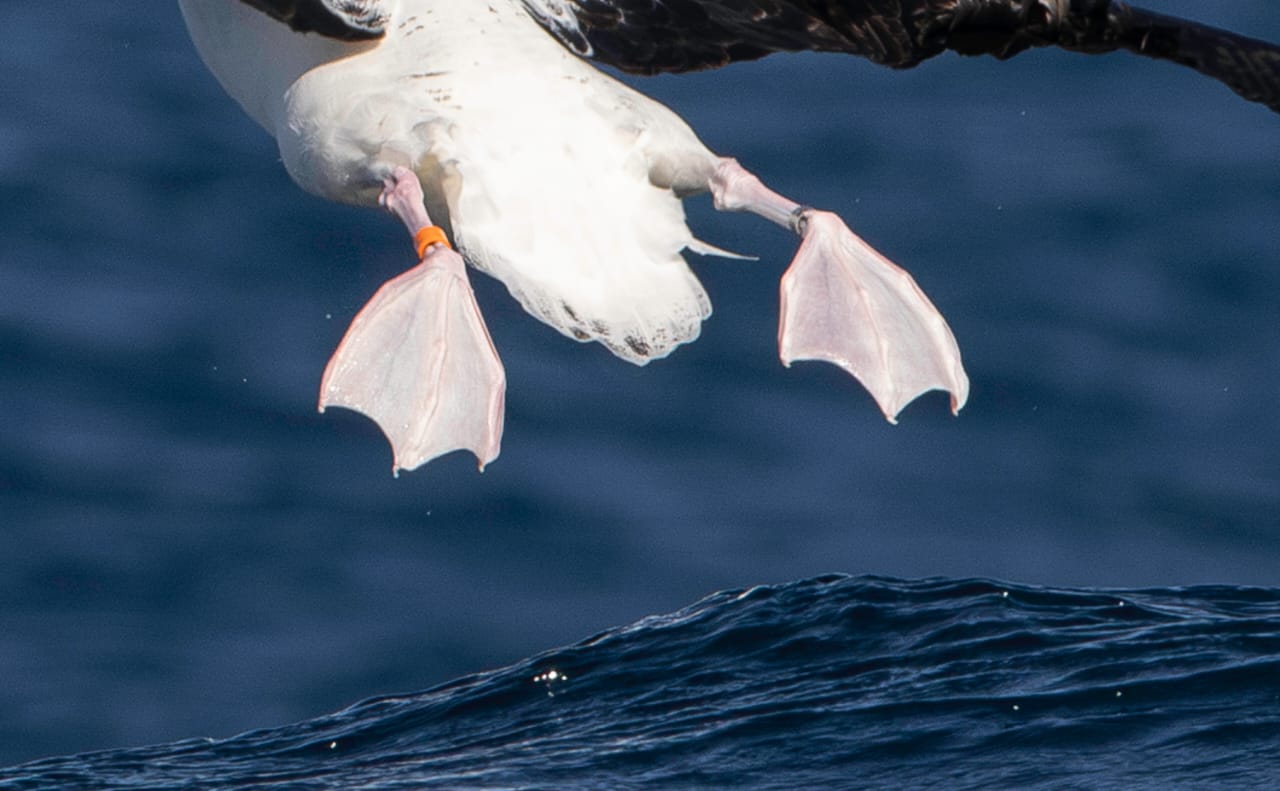
Not your usual view, but this Northern Royal Albatross clearly shows in orange leg band, photograph by Michael Mason
Although the use of technology to follow albatrosses and other pelagic seabirds at sea via the use of bird-mounted electronic loggers and transmitters (“biologging”) has hugely increased our understanding of quite where seabirds go away from their breeding islands, there is still value and an interest in learning about at-sea movements from recoveries and sightings of birds bearing leg-mounted bands. The use of alphanumeric colour bands and digital zoom cameras is allowing birds photographed at sea on tourist pelagic tours to be individually identified, and their ‘back stories’ obtained from national banding schemes. Two recent examples of colour-banded great albatrosses, Diomedea photographed at sea follow.
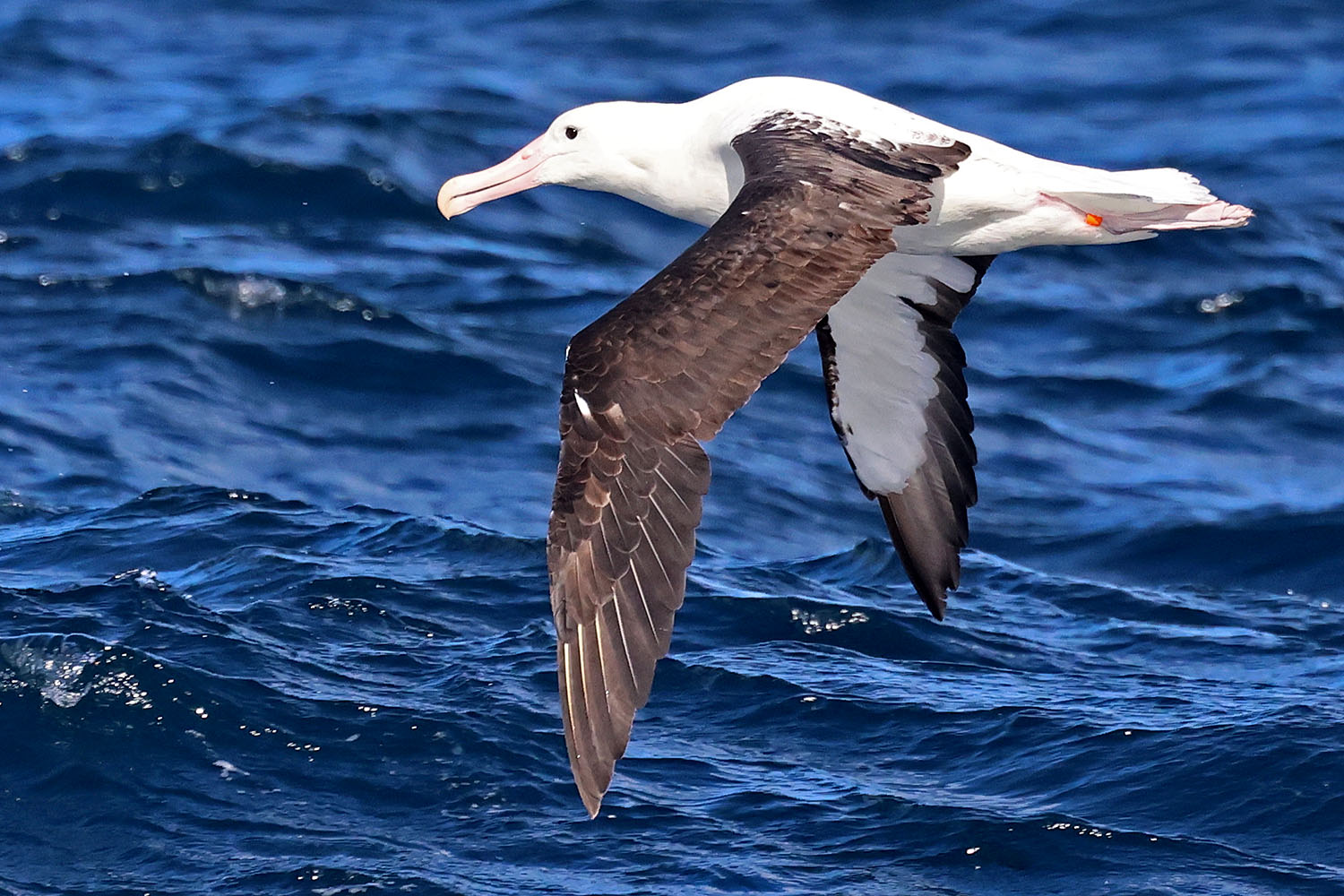
This 2018/19 cohort Northern Royal Albatross shows its orange leg band in flight, photograph by Trevor Hardaker
Northern Royal Albatross
One of three Endangered Northern Royal Albatrosses Diomedea sanfordi seen on a Zest for Birds pelagic trip on 5 September 2024 off the coast of South Africa’s Cape Peninsula was photographed bearing a plain orange plastic band on its left leg and a metal band on its right, The bird was banded as a chick in the mainland colony on New Zealand’s Pukekura/Taiaroa Head on the tip of the Otago Peninsula near Dunedin. That colour was used to band the approximately 30 birds that fledged in 2019, which would make the photographed bird five years old.
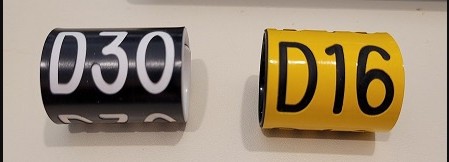
Alphanumeric colour bands have been used on Northern Royal Albatross chicks at Taiaroa Head from the 2022/23 breeding season, allowing banded birds to be individually recognized from photographs taken at sea, photograph from the Royal Cam Albatross Group New Zealand Facebook page.
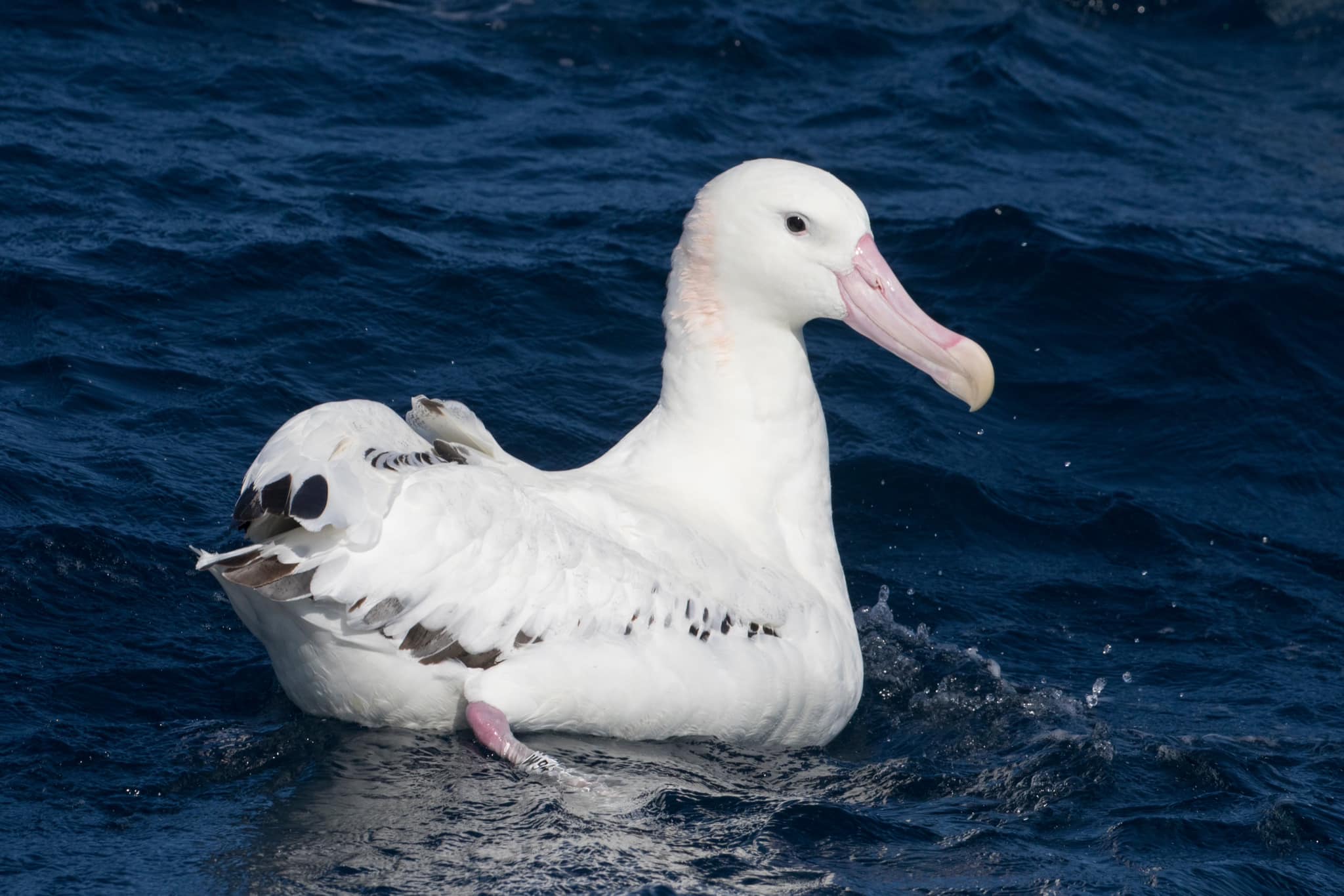 An old male Wandering Albatross White W94 off Tasmania, photograph by Xu Shi
An old male Wandering Albatross White W94 off Tasmania, photograph by Xu Shi
Wandering Albatross
The Seabirds and Pelagics Australia Facebook page has reported a Vulnerable Wandering Albatross Diomedea exulans with colour band White W94 photographed on an Eaglehawk pelagic trip off the south-eastern coast of Tasmania on the weekend of 7/8 September 2024.
Karine Delord, Centre d'Etudes Biologiques de Chizé, France reports to ACAP Latest News that the bird was banded as a chick in the Pointe Basse colony on France’s Possession Island, Crozet Islands in the southern Indian Ocean on 01 October 1981 (making it now 43 years old). Subsequently identified to be a male, it was regularly observed breeding in its natal colony from 1988 to 2013 with two different partners over the periods 1988 to 2005 and 2010 to 2013. Since then it has been recorded back on the island during the pre-breeding period but without any subsequent signs of it breeding, with the last sighting being made in 2022.
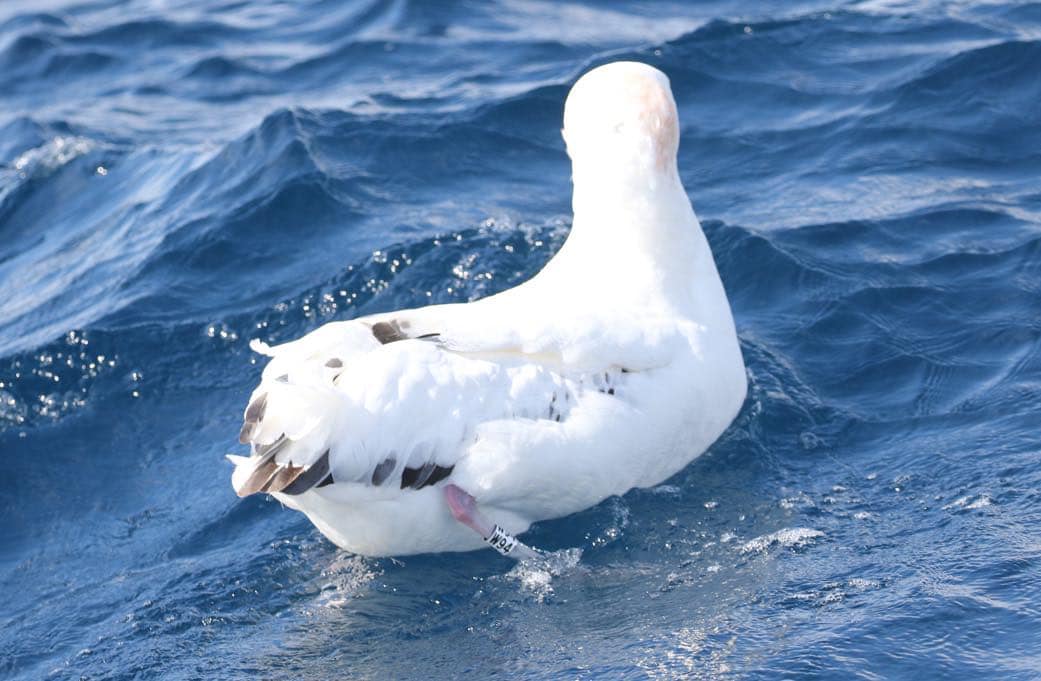
Another view of White W94, photograph by Xu Shi
Karine Delord writes: “Biologging has enabled us to gain a better understanding of the distribution at sea of large albatrosses breeding in the French Austral Islands, such as on Possession. Juveniles, immatures and sabbatical adults travel around the Southern Ocean, with the Tasman Sea appearing to be of particular importance as a region to visit.”
It seems banded Wandering Albatrosses are quite often identified from Eaglehawk pelagic trips, including four different birds that have been previously reported by ACAP Latest News coming from four different breeding islands: Bird Island in the South Atlantic, Marion and Possession Islands in the southern Indian and Macquarie Island in the southern Pacific. Quite a cosmopolitan meeting place!
With thanks to Karine Delord, Centre d'Etudes Biologiques de Chizé, France and Trevor Hardaker, Zest for Birds.
References:
Delord, K., Barbraud, C., Bost, C.-A, Cherel, Y., Guinet, C. et al. 2014. Atlas of Top Predators from French Southern Territories in the Southern Indian Ocean. CNRS Research Report. 253 pp.
Weimerskirch, H., Cherel, Y., Delord, K., Jaeger, A., Patrick, S.C. & Riotte-Lambert, L. 2014. Lifetime foraging patterns of the wandering albatross: life on the move! Journal of Experimental Marine Biology and Ecology 450: 68-78.
John Cooper, Emeritus Information Officer, Agreement on the Conservation of Albatrosses and Petrels, 20 September 2024

 English
English  Français
Français  Español
Español